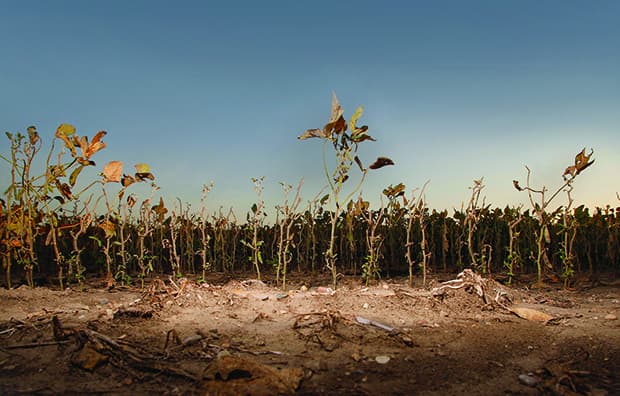Fresh Source
$10M Grant Taps Into Nontraditional Irrigation Water
by Chris Carroll | Purdue Agricultural Communication photo courtesy of Tom CampbellClimate change could make brutal droughts like the one gripping California more common, endangering the capacity of agriculture to feed a growing population.
Developing alternative—and potentially eyebrow-raising—sources of water for farmers is the focus of CONSERVE, a new multidisciplinary, federal Center of Excellence led by Amy Sapkota, associate professor of applied environmental health, and funded by a $10 million U.S. Department of Agriculture (USDA) grant.
“We’re out of water in key food production areas, and need to be very creative in harnessing nontraditional irrigation water sources that can be safely used to grow our food,” she says.
That means finding farm-based methods to clean up lower-quality water from streams, recycled agricultural water and even effluent from wastewater treatment plants, Sapkota says.
Using such sources currently on crops eaten raw could increase food-borne disease risk, but UMD, University of Delaware and USDA researchers are testing a low-cost filter that uses sand and recycled iron to eliminate microorganisms as well as inactivate chemicals, Sapkota says.
CONSERVE collaborators at the University of Arizona, meanwhile, are cleaning water with ultraviolet light and ozone microbubbles, she says.
“We’ve shown that these technologies work effectively in the lab, and now we’re ramping it up to see if they’re feasible in larger settings,” including small farms around the country.
UMD collaborators include researchers in engineering, agriculture, microbiology and chemistry. Researchers from elsewhere, including the University of Maryland, Baltimore, will focus on legal and regulatory issues of using nontraditional water, and consumer reaction to food grown with these sources.
“Will people purchase it?” she says. “First, we need to ensure that these foods are safe to eat, and then understand and address the potential barriers for social acceptance.”
0 Comments
Leave a Reply
* indicates a required field

